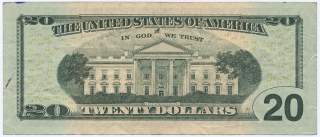5 Big Questions Facing the U.S. Economy in 2017
By no means does 2017 appear to be a great year of economic growth.
The U.S. economy faces a number of threats in 2017. A number of former growth prospects, such as housing, now appear negative. Other economic risks have materialized following the election of President-elect Donald Trump. Post-election tax reform and fiscal spending proposals sent expectations for U.S. growth soaring. Whatever the outcome in 2017, it should prove to be one of the more intriguing market environments for economic observers.
Anticipated to be a tailwind in 2017, housing may in fact prove to be more of a headwind. Much of this reversal of fortune is due to the surge in interest rates that correspondingly lifted mortgage rates following the election. Housing has been creeping back to normal from the all-time low levels of the Great Recession, but on the back of lower interest rates. If current rates persist or continue to escalate, the combination of increasing home prices and higher mortgage payments (more than a 10 percent increase since the election for a new home purchase) will discourage buying. But there may also be another effect—capping home price increasing or causing a correction. Either way, housing will not be the driver it was projected to be in 2017.
One of the least predictable (and most important) variables affecting the United States will be the strength of the U.S. dollar. The dollar affects a range of asset prices and can make or break global growth. A strengthening dollar could limit global growth through lower trade volume, and reduce U.S. exports while boosting imports. A lower dollar would boost commodity prices and tend to increase U.S. exports.
How the dollar story unfolds is not straightforward. Monetary policy divergence between the United States and the rest of the world would dictate that the dollar may continue to strengthen. But the U.S. dollar is already “over-valued” according to the Bank for International Settlements’ real effective exchange rate index. This index is a measure utilizing a country’s relative trade importance with another, adjusted for inflation to determine whether a currency is properly valued.
Of note, the much-maligned Chinese RMB is more than 20 percent overvalued according to the BIS, and the US dollar is 17 percent above fair value. The implication here is the RMB has much further to fall if the People’s Bank of China decides to cease defending it. This partially contradicts the narrative that the Chinese have been manipulating their currency. The People’s Bank of China has been intervening, but to prevent it from weakening too quickly, not to gain a competitive advantage.
The resolution of how these dynamics unfold is unpredictable. Does the RMB fall toward its fair value? Does the dollar keep moving higher? Will the yen strengthen or fall again? How 2017 unfolds on these fronts will be critical to the performance of the U.S. economy.
Since the election, U.S. economic surprises have outnumbered the disappointments and expectations for 2017 and 2018 growth have increased significantly. However, it has yet to be proven whether actual growth will match market positivity. Economic shocks have surged in the fourth quarter, beginning before the election. Following the election, expectations for further improvement have become the consensus. The timing of the proposed tax breaks and fiscal spending will be the determining factor in whether these expectations can be achieved, and, as ever with politics, there could be disappointments.
Wages are one of the wildcards in 2017 that could make or break the performance of other critical indicators including consumer spending and inflation expectations. But it is often cited as growing too slowly to stimulate growth. While in aggregate this is true, it is not the case for all demographics.
Currently, there are wide wage growth differentials across employment groups and circumstances. For constantly employed, prime-age workers, wage growth accelerated dramatically in the second half of 2016. Meanwhile, overall wage growth has been lackluster. But, according to the Atlanta branch of the Federal Reserve, for constantly employed workers, wage growth has returned to pre-crisis levels at around 4 percent.
This distinction is an important one. The main caveat is the amount of part-time employment the U.S. labor market has created recently. If these wages continue to move higher, there could be acceleration in the overall wage figure. This would drive inflation and growth expectations higher, a feedback loop that has not occurred for years.
Will workers return to the labor force? Without a higher participation rate, significant job growth will be difficult to come by in 2017. Employment gains will be largely dependent on how many workers return to the labor force. There has recently been a slight uptick in the number of participants. But it appears less of a reversal in the trend and more a process of finding a new, lower equilibrium.
Why this new, lower equilibrium? Boomer retirement is not something easily reversed. In part, this lower participation rate is also a driver of the previously mentioned spotty wage growth gains. When hiring from a smaller pool of experience, wages tend to be forced higher. If there were a jump in the participation rate, it would hold wage growth in check. But this is unlikely to happen. More likely is slowing of overall job creation with slow overall wage gains, and outperformance for consistently employed individuals—similar to recent trends.
By no means does 2017 appear to be a great year of economic growth. And it certainly will not be the year of great acceleration. Fiscal policy timing will largely determine whether it meets the aggressively positive outlook or not. Irrespective of meeting growth targets, the unfolding of the 2017 economy will prove one of the most interesting in recent memory to observe.
Samuel Rines is the Senior Economist and Portfolio Strategist with Avalon Advisors in Houston, TX.
Image: Rear of U.S. twenty-dollar bill. Wikimedia Commons/Public domain

